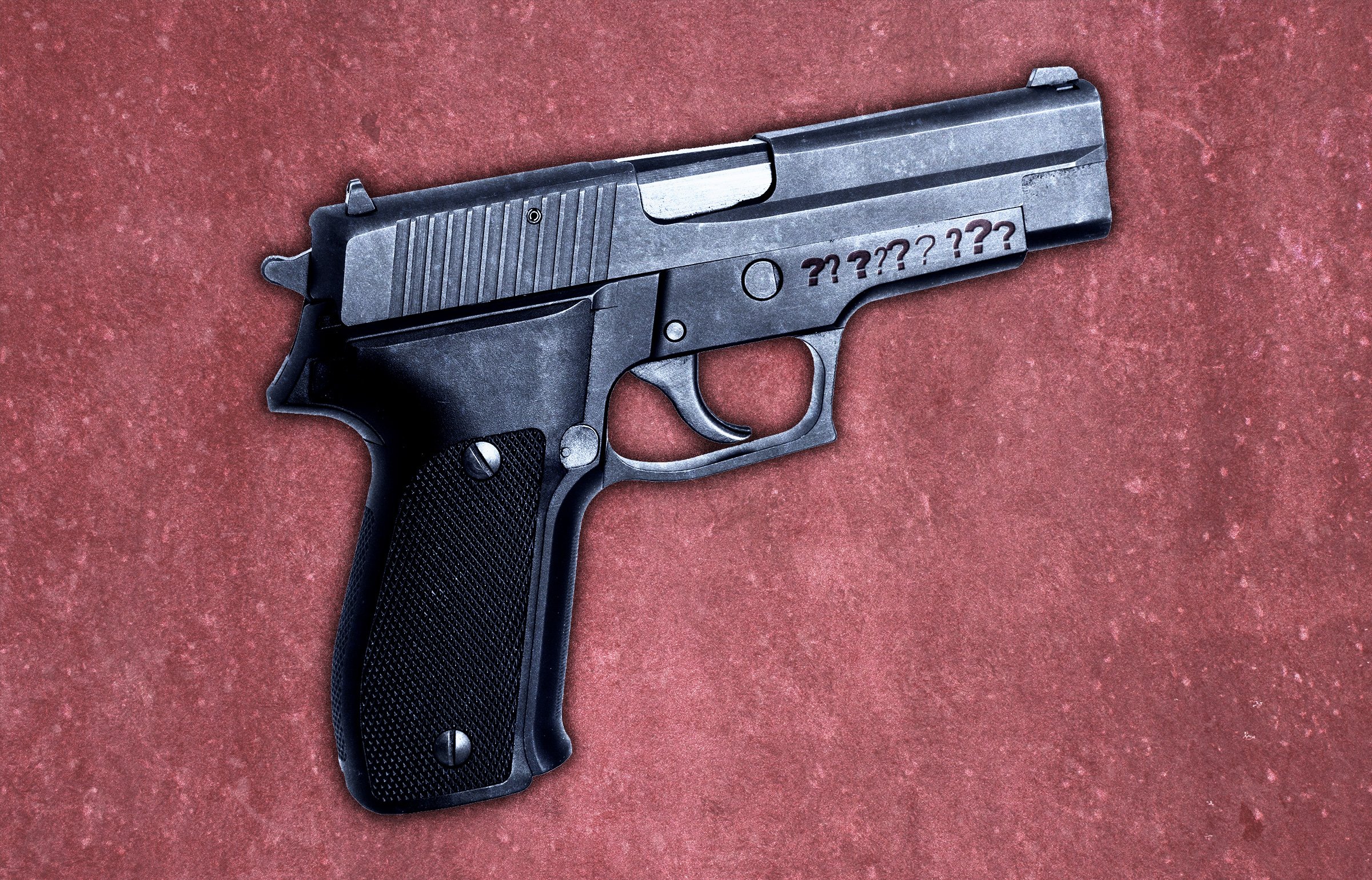The weapon used in the Santa Clarita, California, school shooting was a homemade, unserialized pistol, otherwise known as a ghost gun.
The Los Angeles County Sheriff’s Department confirmed on Thursday that the .45-caliber handgun was crudely assembled from parts available for purchase without a background check. Officials said they had no indication who purchased the parts for the firearm, or who assembled it.
The Trace and KPCC first reported that law enforcement agencies believed the gunman had used a homemade weapon. It was confirmed by the Los Angeles Times.
Authorities identified the gunman as a 16-year-old Saugus High School student. They said he used the handgun to shoot five classmates, killing a 14-year-old boy and 16-year-old-girl. Authorities said no rounds were left in the gun’s chamber.
The gunfire lasted just 16 seconds and prompted police to scramble throughout the campus and surrounding neighborhoods to locate the shooter. Authorities used surveillance video at the school to determine he shot himself in the head at the scene. He died Friday at a hospital.
In an interview with ABC7, Sheriff Alex Villanueva said authorities had found at least one additional homemade weapon at the shooter’s residence. Villanueva also said law enforcement had previously recovered six guns belonging to the suspect’s father.
“The father had six guns registered to him,” he said. ”All the weapons were lawfully removed from the home and he became a prohibited possessor. The guns were subsequently destroyed, legally.”
As The Trace reported in May, more and more homemade, unserialized weapons are popping up at crime scenes across California. Agents from the Bureau of Alcohol, Tobacco, Firearms and Explosives now say that nearly a third of the guns recovered by the agency in the state are homemade.
Ghost guns provide a host of challenges for law enforcement. Chief among them is that they enable minors or those with criminal records to acquire firearms without having to go through a background check or create a trail of paperwork surrounding a gun purchase. Because ghost guns have no serial numbers, they are almost impossible to trace.
California law enforcement agencies say that the majority of ghost guns now being used by criminals are AR-15-type rifles or Glock-type pistols. But one of the earliest models to hit the DIY gunmaking scene was the 1911 handgun. Kits to construct the pistols remain available online.
The popularity of ghost guns has been propelled by advances in technology and the proliferation of cheaper gunmaking tools, like computer numerical control (CNC) machines and drill presses. Ghost guns are now openly sold online in near-but-not-quite complete form, colloquially referred to as 80 percent receivers (the user must finish the remaining 20 percent for it be considered a “gun” under law). Once the lower receiver is complete, the other parts, like the upper receiver and the firing controls, can be assembled within minutes, creating a fully functional, yet untraceable firearm.
These kits are free from federal regulation because of a carve out in the 1968 Gun Control Act allowing people to manufacture weapons at home for personal use without submitting to a background check. However, five states, including California, have passed laws designed to rein in this nascent market.
Homemade weapons are rapidly becoming the tool of trade for criminals who’d be otherwise barred from purchasing guns through more conventional means. In California, that has meant some sharp increases in ghost guns recovered by police departments:
- The San Diego Police Department saw a jump from five ghost guns recovered in 2017, to 52 the following year.
- The San Francisco Police Department recovered 15 homemade firearms in 2017 compared to 44 in 2018.
- The Los Angeles Police Department does not track recoveries of ghost guns.
Ghost guns have showed up in a variety of high-profile shootings in California, including two other mass shootings. In 2013, after failing a background check at a gun store, a 23-year-old lone gunman used a homemade AR-15 rifle to kill five people at Santa Monica College. The weapon was illegal to possess under California law.
In 2017, a 44-year-old man with a criminal record that barred him from purchasing a gun assembled two AR-15s with parts bought online. The man used the guns to go on a 25-minute shooting spree that left five dead and 18 injured.
Ghost guns are increasingly being turned against police officers as well. In August, a roadside gun battle in Riverside left a California Highway Patrol officer dead, and two others wounded.
This has prompted the state of California to beef up controls on ghost gun ownership. In 2016, lawmakers passed a bill requiring each homemade weapon in the state to have a serial number and be registered with the California Department of Justice. A new law, signed in October by Governor Gavin Newsom, also requires background checks for individuals seeking to buy firearm parts.
Meanwhile, two bills designed to regulate ghost gun sales and parts are pending in Congress.
LAist/KPCC staff contributed to this report.


